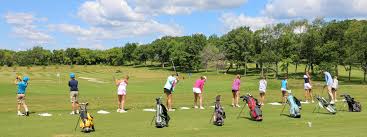

What Junior Tournament Path Leads to College Success?
4/14 CGC Staff
Walk around any AJGA invitational or tournaments such as the Dustin Johnson World Junior, Sage Valley Junior Invitational, Junior PGA Championship, or the US Junior Amateur, and you’ll see swarms of the top college coaches following the well-known junior players. Many of these players had early success that gained them entry into these elite tournaments, and the fields in these events look very similar in a year time span, as many are determined by rankings. Not only do these tournaments provide the athletes with elite level competition, but many of them simulate college level course setup and distance to prepare athletes for the challenges they will face in college tournaments. Many elite tournaments are held at prestigious and difficult courses that identify which players have the game that is college ready. The majority of recruits at the top power-4 golf schools have developed their game through this track. History has shown that many of the players who have experienced success for more than a year in these tournaments have translated that success into good collegiate results, but there are also many athletes who, for a variety of reasons, struggle to replicate their game in college.
Although many successful college players honed their skills at the elite tournament level, there are many others that did not take the elite path to college golf. There are numerous reasons that players may choose to compete at the regional level. Elite level junior golf has a high price tag, when adding up the cost of plane flights, hotel stays, car rentals, and entry fees. Some families do not have the means to travel around the country and prefer to travel to tournaments within driving distance. Some golfers may feel more comfortable in a regional or local setting, and others might not yet have the game or ranking to qualify for high level events. While there are many quality regional tours and open AJGA events, most of these events might not provide the competition, distance, and course setup to mimic a college event.


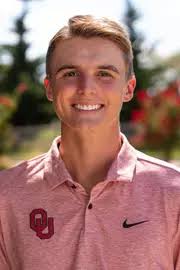

Two players who stand out from the past two junior classes are 2023’s Jacob Modleski and 2024’s Clark Van Gaalen. Modleski, who is from Indiana and is a sophomore at Notre Dame, didn’t play the typical elite-heavy schedule until the spring before he entered college. Modleski climbed up the junior rankings through AJGA opens, several of which he won, and Golfweek and Indiana Junior Tour events, with a modest JGS ranking of 60th in his class when he signed with the Irish. Modleski had participated in both the Western Junior and the US Junior before signing, but his elite events were limited. Despite this, the Notre Dame coaches had a good eye for talent, and Modleski’s game started taking off with a runner-up finish at the 2023 Western Junior and round of 32 appearances at the US Amateur and Junior Amateur that summer. In his freshman year, he notched one collegiate win, two top-5 finishes, and a win at the prestigious Jones Cup Invitational. Van Gaalen, a freshman at Oklahoma, was widely known for years as the kid who dominated California junior events by shooting in the 60s but rarely ventured out of state except for US Kids Worlds. Many questioned how he’d fare in higher profile events, which he didn’t start playing until the spring before he entered college. His best finish in five elite junior events was 10th, and he added a 5th place finish at the Monroe Invitational to prepare for college play. He’s competed for the Sooners in eight events either in the lineup or as an individual, with one top-5 and two top-10 finishes thus far. Van Gaalen has proven that you don’t have to travel far for years of junior golf before finding success at the collegiate level.


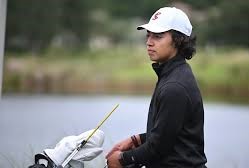

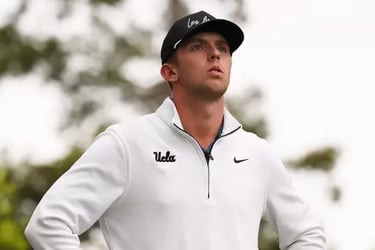

One athlete who was under the radar as a junior but has blossomed into a consistent player is Grand Canyon freshman Matthew Diehl. He began competing in elite events towards the end of 2023, long after he was recruited by a mid-major school. Diehl had success at the IMG Worlds and finished 6th at the AJGA Simplify Boys Championship before making his mark in the quarterfinals of the US Junior Amateur before starting college. Although Grand Canyon’s schedule includes mainly mid-range power ranked events, Diehl has shown talent at that level, with one win, two top-10s, and two top-15 finishes. He is proof that a late bloomer can translate late junior success into solid collegiate finishes. One freshman athlete who has surprised many with his play is Santa Clara’s Matt Robles, a player with some open AJGA success but very little junior elite experience. Robles has been a model of consistency during his freshman year, albeit in lower power ranked events. He has amassed three top-5 and two top-10 finishes thus far, and we’d love to see what he could do in more competitive fields. Next on our list is UCLA freshman Baylor Larrabee, an athlete who has significantly outperformed what he did in junior golf. Larrabee came out of nowhere to win the 2024 Junior PGA Championship a month before starting college. He had success locally in Washington in junior and amateur events but did not venture far from the Northwest often. Larrabee has competed for the Bruins in eight events in his freshman campaign thus far, with one top-10 and two top-20 finishes against tough competition, and he has made lineups over more heralded athletes.
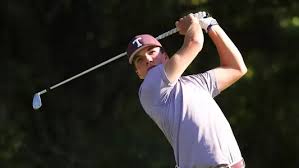

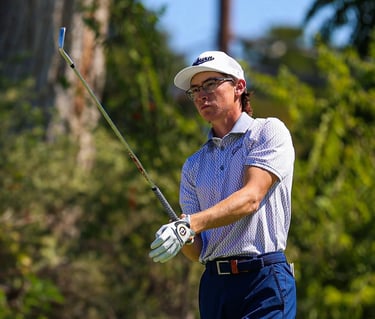

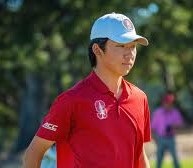

Taking a look at the top-20 North American freshmen this year as ranked by Scoreboard, the list includes a large group of players who competed regularly in elite events. We do not include international players, as they play a completely different junior and amateur event schedule as junior golfers. While there is no dominant Jackson Koivun this year, several freshmen have put together some strong finishes and have appeared in a high percentage of lineups. Most notable is Texas A&M’s Wheaton Ennis, who had capped off his junior career with several high profile wins. Thus far, he has carded two top-5 and two top-10 finishes in his freshman campaign and is a key piece in the Aggie lineup. Billy Davis, an Auburn Tiger who was our #1 ranked 2024 recruit and elite junior top-10 machine, would be in the starting lineup at any other program. Due to Auburn’s incredible depth, Davis has alternated between lineup and individual spots, nonetheless gaining valuable experience. He has three top-5 finishes, two in individual tournaments and one in the elite-field Ben Hogan Invitational. Davis also has two top-15 finishes on his collegiate resume. Stanford’s Jay Leng, one of the top recruits in the class of 2024 with six elite junior top-5 finishes, has found himself consistently in the young Stanford lineup as a freshman. Stanford’s schedule is packed with high power ranked events, and Leng has carded two top-15 and one top-25 finish in his freshman campaign thus far. While his results are not spectacular, he is a consistent contributor to the team while playing against strong fields.
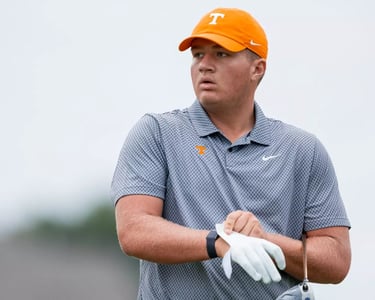



Tennessee’s Jackson Herrington was a top-50 JGS ranked player at the time of his signing, then became one of the best in the class of 2024 in early 2024 leading up to college. The winner of Tennessee Open has had a solid start to his college career, competing in the lineup for the Vols in eight events. Herrington started off with an opening top-10 finish and has notched three top-20 finishes in a high-power ranked schedule. Vanderbilt freshman Ryan Downes, a former Massachusetts Amateur champion, has competed in eight events for the Commodores, both in the lineup and as an individual. In a high-power packed schedule, he has shown some inconsistency but has notched one top-5 and one top-10 finish in strong fields. Like Leng, both Herrington and Downes have been consistent contributors to teams that have tough lineups to crack.

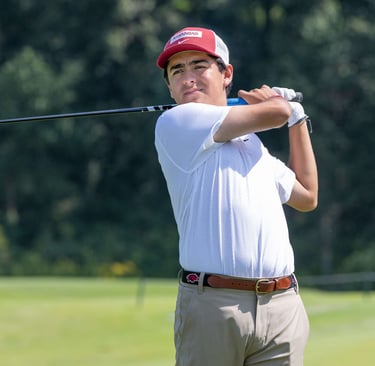


Gerardo Gomez of Arkansas, a top-5 finisher at the 2024 Junior Invitational, was a fixture on the elite junior circuit for years. Arkansas plays a schedule of mainly mid-level and one high powered event, and Gomez has been a consistent presence in the Razorback lineup. In eight collegiate events, he has notched two top-15 and two top-20 finishes, with only one finish lower than 34th. His elite junior experience helped his transition easily to college golf. Finally, there is Daniel Zou of Rice University, who experienced modest results in Invitational events and consistent success in AJGA open events as a junior golfer. Zou was a top-50 ranked player in JGS but has had solid success in college thus far. Though Rice plays a low to mid-level power ranked schedule, in which he has racked up one top-5, two top-10, and one top-15 finish, one of his top-10 finishes was in the loaded field at the Cabo Collegiate.
After looking at current freshman results, there is definitely a mix of athletes with and without elite junior experience who have achieved successful results and rankings in college. With that begin said, many of the top elite junior competitors are playing on top-level teams with lineups that are harder to crack and that play in tournaments with elite level fields. If these athletes were playing on teams with less competitive schedules, we would expect them to consistently make lineups and have more top finishes than on their current college resume. A true measure of lasting college success would be to look at these athletes and how they fare in their 3rd and 4th years of college tournaments. However, from looking at the small sampling of golfers in this article, there is proof that one can be successful with either junior tournament path that they choose.
Photo credits to OU golf, Notre Dame golf, Sant Clara golf, Grand Canyon golf, UCLA golf, Stanford golf, Auburn golf, Texas A&M golf, Tennessee golf, Vanderbilt golf, Arkansas golf, Rice golf

